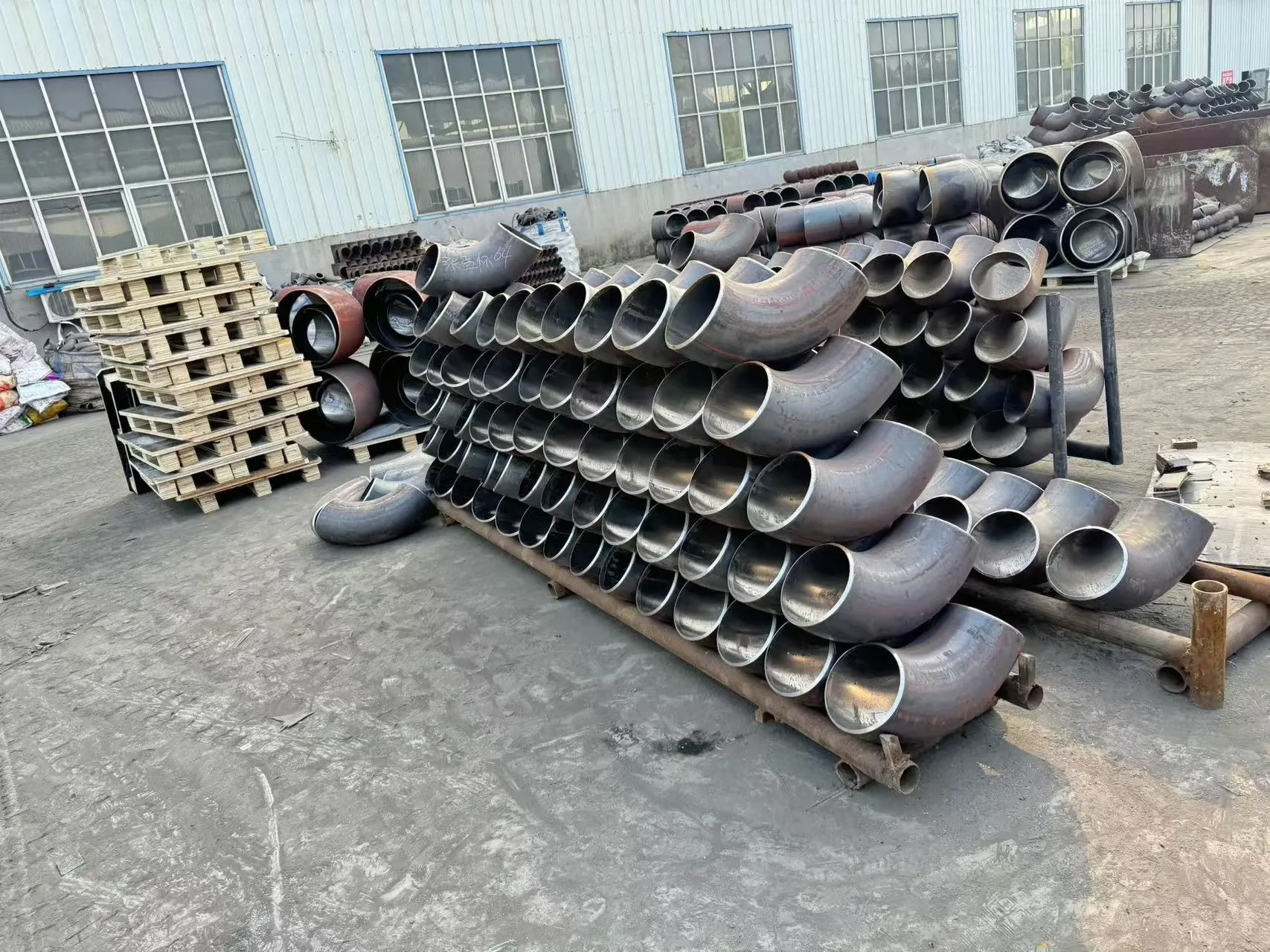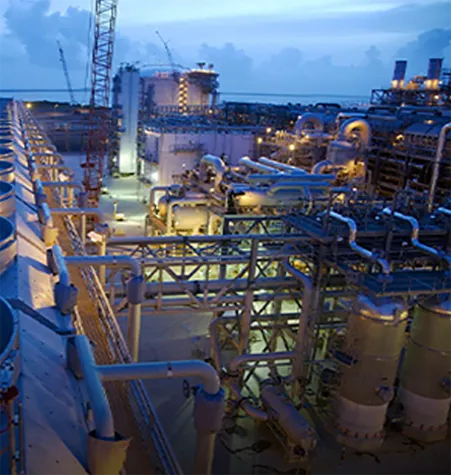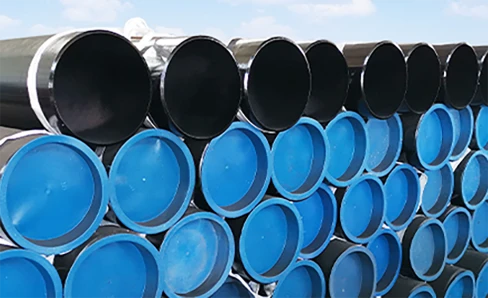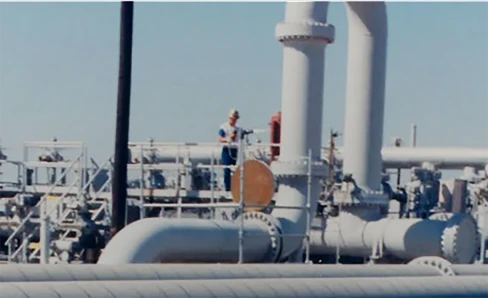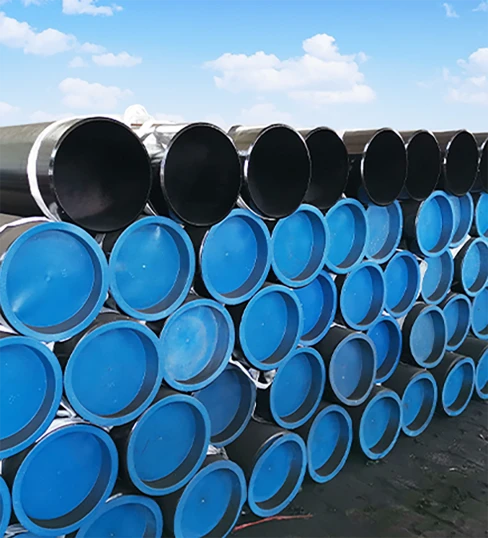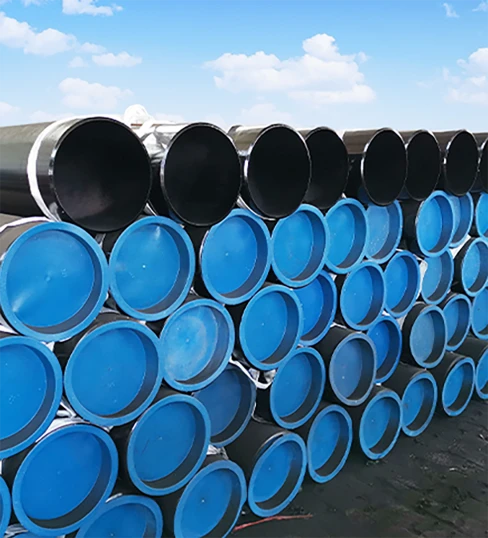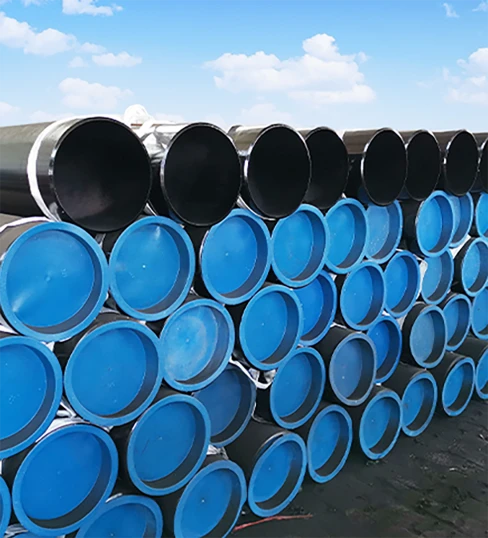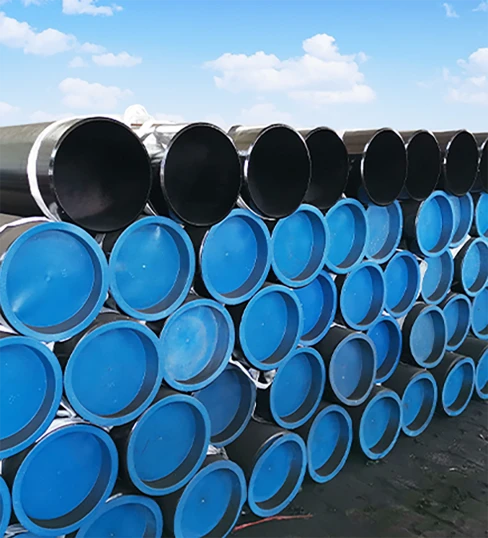Performance of Tee Fittings
(1) Physical Properties
Strength
Tee fittings need to have sufficient strength to endure the internal pressure of the pipeline system. In both liquid - conveyance and gas - transportation systems, they must be able to withstand the forces exerted by the medium. For example, in a high - pressure industrial pipeline system, tee fittings made of metal materials such as carbon steel or stainless steel can bear pressures up to several megapascals (MPa) without fracturing or deforming excessively. The strength of tee fittings is mainly determined by the material characteristics and the wall thickness. Generally, a thicker wall thickness enables the fitting to withstand higher pressure for the same material.
Sealing Performance
The sealing ability of tee fittings is essential for the normal operation of the pipeline. When connecting pipes at different angles and diameters, it is crucial to ensure that the medium does not leak. In liquid - transportation systems, good sealing can prevent fluid leakage, which can avoid resource waste and environmental problems. In gas - transportation systems, excellent sealing is even more critical because gas leaks can pose safety hazards. Tee fittings can be sealed through methods such as flange connections, welded connections, and threaded connections. In a flange - connected tee fitting, a gasket (such as a rubber or polytetrafluoroethylene gasket) is placed between the flanges. When the bolts are tightened, the gasket is compressed and fills the tiny gaps between the flange surfaces to achieve a seal. Welded connections involve welding the tee fitting to the pipes, creating a continuous sealed structure that is often used in high - pressure and high - temperature environments.
Durability
Tee fittings are required to have good durability to withstand the wear and tear caused by the medium flow and external factors over a long period. In systems where the medium contains solid particles or has a high flow velocity, the inner wall of the tee fitting can experience abrasion. Therefore, materials with high hardness and wear - resistance, such as some alloy - steel tee fittings, are used to reduce wear. Additionally, tee fittings also need to resist factors such as vibration and impact that may occur during pipeline operation.
(2) Chemical Properties
அரிப்பு எதிர்ப்பு
Tee fittings may be exposed to a variety of corrosive substances in their working environment, so corrosion resistance is a vital property. In the chemical industry, tee fittings often come into contact with acids, alkalis, salts, and other chemicals. For example, in a pipeline system for transporting sulfuric acid, tee fittings made of corrosion - resistant materials such as Hastelloy alloys are used to prevent corrosion by sulfuric acid and ensure the safety and longevity of the pipeline system. Stainless - steel tee fittings (like 304 and 316 stainless steel) also have good corrosion - resistance and can resist the corrosion of weak acids, alkalis, and some salts. They are widely used in industries such as food processing and pharmaceuticals, where hygiene and corrosion - resistance requirements are relatively high.
Chemical Compatibility
Tee fittings must be chemically compatible with the transported medium to avoid chemical reactions that could affect the quality of the medium or the integrity of the fitting. In the transportation of certain reactive chemicals, such as strong oxidizing agents or reducing agents, the tee fittings need to have a stable chemical structure. For example, in the petrochemical industry, when transporting hydrocarbons and other chemicals, tee fittings with good chemical compatibility are used to ensure that no unwanted chemical reactions occur during the transportation process.
2. Application Scenarios of Tee Fittings
(1) Industrial Applications
Chemical Industry: Tee fittings are extensively used in the chemical manufacturing process to connect different pipes for the transportation of various chemical raw materials and products. For example, in a chemical plant producing fertilizers, tee fittings are used to connect the pipes for ammonia, nitric acid, and other raw materials, allowing for the mixing and reaction of different chemicals. They also play a crucial role in the distribution of final products to different storage or packaging areas.
Oil and Gas Industry: In the oil and gas exploration, production, and refining processes, tee fittings are essential components. In the extraction stage, they are used to connect the wellhead pipes to different flow lines for oil, gas, and water separation. During transportation, tee fittings connect the main pipelines to branch lines for pressure - testing, sampling, or injecting additives. In refineries, they are used to distribute the refined products to different storage tanks or further - processing units.
(2) Building and Plumbing Systems
Water - Supply System: In building water - supply systems, tee fittings are used to connect the main water - supply pipe to branch pipes that lead to different floors, rooms, or water - using fixtures such as faucets, showers, and toilets. This enables the distribution of water to various parts of the building. For example, in a multi - story apartment building, tee fittings ensure that each apartment unit receives a sufficient and stable water supply.
Drainage System: Tee fittings are also used in the building drainage system to connect the drain pipes from different sources, such as sinks, bathtubs, and floor drains, to the main drainage pipe. They allow for the efficient collection and removal of waste - water from different parts of the building. In addition, in rain - water - drainage systems, tee fittings can be used to divert rain - water to different drainage paths or rain - water - harvesting systems.
(3) HVAC (Heating, Ventilation, and Air - Conditioning) Systems
In HVAC systems, tee fittings are used to connect ducts or pipes of different diameters and directions. In the heating system, tee fittings can distribute hot water or steam from the main heating source to different heating coils or radiators in various rooms. In the ventilation system, they are used to split or combine air - flow paths, allowing for the proper distribution of fresh air or exhaust air. In the air - conditioning system, tee fittings connect the refrigerant pipes to different components such as the evaporator and condenser, enabling the refrigerant to circulate and the air - conditioning system to function effectively.
CAP
Properties of Pipe Caps
(1) Physical Properties
Strength
Pipe caps need to possess sufficient strength to bear the internal pressure of the pipeline system. In a pressurized pipeline, whether it's carrying liquids or gases, the pipe cap acts as a closure and must be capable of withstanding the pressure exerted by the medium. The strength of a pipe cap is determined by its material and thickness. For example, in a high - pressure oil pipeline, a steel pipe cap with a suitable thickness, such as one made of carbon steel or stainless - steel, can endure the pressure without deforming or rupturing. The design and manufacturing standards of the pipe cap, like its shape and the connection method with the pipe, also influence its strength.
Sealing Performance
Sealing is a critical property of pipe caps. A well - sealed pipe cap prevents the leakage of the medium inside the pipeline. In applications such as liquid - storage tanks or gas - transportation pipelines, the sealing mechanism of the pipe cap is of utmost importance. Pipe caps can use various sealing methods. For flange - type pipe caps, a gasket is often used. The gasket material, usually rubber, polytetrafluoroethylene (PTFE), or other elastomers, is compressed between the flange of the pipe cap and the pipe end to create a seal. Threaded pipe caps rely on the tightness of the thread connection and sometimes use sealing tapes or compounds to enhance the sealing effect.
Impact Resistance
Pipe caps should have good impact resistance to withstand possible external forces. In industrial environments, pipelines may be subject to accidental impacts from moving equipment, falling objects, or vibrations. A pipe cap with high impact resistance can prevent damage and maintain the integrity of the pipeline system. Materials like high - density polyethylene (HDPE) pipe caps have good impact - resistant properties and can absorb and dissipate the energy of impacts to a certain extent.
(2) Chemical Properties
அரிப்பு எதிர்ப்பு
Pipe caps are often exposed to various corrosive environments. In chemical - processing plants, they may come into contact with acids, bases, salts, or other corrosive chemicals. Therefore, corrosion resistance is an important property. Stainless - steel pipe caps, such as those made of 304 or 316 stainless steel, have excellent resistance to corrosion from many chemicals and are suitable for use in the chemical and food - processing industries. For more extreme corrosive environments, such as those involving strong acids like hydrochloric acid or sulfuric acid, pipe caps made of special alloys such as Hastelloy may be used to provide enhanced corrosion protection.
Chemical Inertness
Pipe caps need to be chemically inert in some applications to avoid reactions with the medium they are in contact with. In the pharmaceutical and semiconductor industries, where the purity of the medium is of high importance, the pipe caps must not release any substances or react with the stored or transported chemicals. Materials like PTFE - lined pipe caps are chemically inert and can meet these requirements.
2. Application Scenarios of Pipe Caps
(1) Pipeline End Closures
In the construction and maintenance of pipelines, pipe caps are widely used to close the ends of pipes. In oil and gas pipelines, when a section of the pipeline is being installed or repaired, pipe caps are used to seal the open ends to prevent the entry of dirt, water, or other contaminants. In water - supply and drainage pipelines, pipe caps are used to temporarily or permanently close the ends of pipes during system upgrades, expansions, or modifications.
(2) Equipment Protection
Pipe caps are used to protect the openings of equipment such as tanks, vessels, and reactors. In the chemical industry, storage tanks for chemicals are equipped with pipe caps to prevent the release of hazardous substances and to protect the contents from external contaminants. In the food - processing industry, tanks for storing ingredients or finished products are sealed with pipe caps to maintain hygiene and product quality.
(3) Pressure - Testing and Maintenance
During pressure - testing of pipelines or equipment, pipe caps play an important role. They are used to seal the ends of the test section so that pressure can be applied to check for leaks and the integrity of the system. In routine maintenance of pipelines, pipe caps are used to isolate sections of the pipeline for inspection, cleaning, or repair. For example, in a municipal water - supply pipeline, pipe caps can be used to close off a small section of the pipeline for internal inspection and to replace damaged parts.
Cross - Fittings
Performance of Cross - Fittings
(1) Physical Properties
Strength
Cross - fittings must have adequate strength to withstand the internal pressure of the pipeline system. In both liquid and gas transmission pipelines, they are subjected to the pressure exerted by the medium. For example, in an industrial water - supply system with high - pressure pipelines, cross - fittings made of materials such as carbon steel or stainless steel can bear pressures of several megapascals (MPa). The strength mainly depends on the material's mechanical properties and the wall thickness of the fitting. Thicker - walled cross - fittings generally have greater strength to resist deformation and rupture under pressure.
Sealing Performance
Good sealing performance is essential for cross - fittings. They connect four pipes at different angles and directions, and any leakage at the connection points can lead to system failures. In liquid - conveyance systems, a leak can cause fluid loss and potential damage to the surrounding environment. In gas - transmission systems, a gas leak can be a serious safety hazard. Cross - fittings usually use flange connections, welded connections, or threaded connections to ensure sealing. For flange - connected cross - fittings, gaskets (such as rubber or polytetrafluoroethylene gaskets) are placed between the flanges. When the bolts are tightened, the gaskets are compressed to fill the gaps between the flange surfaces and achieve a good seal.
Flow Characteristics
The internal structure of cross - fittings affects the flow characteristics of the medium. The smoothness of the inner wall and the shape of the passages play a crucial role in minimizing flow resistance. In a well - designed cross - fitting, the medium can flow smoothly from one pipe to the other three pipes without significant turbulence or pressure drops. This is especially important in high - flow - rate pipeline systems, such as in large - scale water - distribution or chemical - transportation networks.
(2) Chemical Properties
அரிப்பு எதிர்ப்பு
Cross - fittings often come into contact with various corrosive media, so corrosion resistance is a vital property. In the chemical industry, cross - fittings may be exposed to acids, alkalis, salts, and other corrosive chemicals. For example, in a pipeline system for transporting sulfuric acid, cross - fittings made of corrosion - resistant materials such as Hastelloy alloys are required to prevent corrosion. Stainless - steel cross - fittings (such as 304 and 316 stainless steel) also have good corrosion - resistance and can be used in less - corrosive chemical environments or in industries such as food processing and pharmaceuticals, where hygiene and resistance to mild chemical substances are necessary.
Chemical Compatibility
Cross - fittings need to be chemically compatible with the transported medium. They should not react chemically with the medium to avoid contamination of the medium or damage to the fitting itself. In the transportation of reactive chemicals, such as in the petrochemical industry where hydrocarbons are transported, cross - fittings must have a stable chemical structure and be able to maintain their physical and chemical properties to ensure the safety and quality of the transportation process.
2. Application Scenarios of Cross - Fittings
(1) Industrial Pipelines
Chemical Industry: Cross - fittings are widely used in the chemical manufacturing process. They connect different pipes for the transportation of various chemical raw materials and products. For example, in a chemical plant producing fertilizers, cross - fittings are used to connect the pipes for ammonia, nitric acid, and other raw materials, allowing for the mixing and reaction of different chemicals. They also play a crucial role in the distribution of final products to different storage or packaging areas.
Oil and Gas Industry: In the oil and gas exploration, production, and refining processes, cross - fittings are essential components. In the extraction stage, they are used to connect the wellhead pipes to different flow lines for oil, gas, and water separation. During transportation, cross - fittings connect the main pipelines to branch lines for pressure - testing, sampling, or injecting additives. In refineries, they are used to distribute the refined products to different storage tanks or further - processing units.
(2) Building and Plumbing Systems
Water - Supply System: In building water - supply systems, cross - fittings are used to connect the main water - supply pipe to multiple branch pipes that lead to different floors, rooms, or water - using fixtures such as faucets, showers, and toilets. This enables the distribution of water to various parts of the building. For example, in a multi - story apartment building, cross - fittings ensure that each apartment unit receives a sufficient and stable water supply.
Drainage System: Cross - fittings are also used in the building drainage system to connect the drain pipes from different sources, such as sinks, bathtubs, and floor drains, to the main drainage pipe. They allow for the efficient collection and removal of waste - water from different parts of the building. In addition, in rain - water - drainage systems, cross - fittings can be used to divert rain - water to different drainage paths or rain - water - harvesting systems.
(3) HVAC (Heating, Ventilation, and Air - Conditioning) Systems
In HVAC systems, cross - fittings are used to connect ducts or pipes of different diameters and directions. In the heating system, cross - fittings can distribute hot water or steam from the main heating source to different heating coils or radiators in various rooms. In the ventilation system, they are used to split or combine air - flow paths, allowing for the proper distribution of fresh air or exhaust air. In the air - conditioning system, cross - fittings connect the refrigerant pipes to different components such as the evaporator and condenser, enabling the refrigerant to circulate and the air - conditioning system to function effectively.
Bending Pipe
Performance of Bending Pipe Fittings
(1) Physical Properties
Strength
Bending pipe fittings need to have sufficient strength to withstand the internal pressure of the pipeline system and external forces. The curvature of the bend can cause stress concentration, so they must be designed and manufactured to handle these pressures. For example, in a high - pressure steam pipeline, the bent pipes made of alloy steel can bear pressures up to several megapascals (MPa). The material and wall thickness play a crucial role in determining the strength. Thicker - walled bends generally have more strength to resist deformation and rupture.
Flexibility
Flexibility is a unique property of bent pipe fittings. Compared to straight pipes, they can change the direction of the pipeline more smoothly. This property allows for better adaptation to the layout of the installation environment. In a complex industrial plant or a building with a restricted space, the flexibility of bent pipes helps to route the pipeline around obstacles such as equipment, columns, or walls.
Sealing Performance
The sealing performance of bent pipe fittings is as important as that of other pipe fittings. The connection points of the bends, whether through welding, flanges, or threaded connections, need to prevent leakage of the medium. In a liquid - conveyance system, a leak can lead to fluid loss and potential damage to the surroundings. In a gas - transmission system, a gas leak can be a serious safety hazard. When using flange - connected bends, gaskets are placed between the flanges to ensure a good seal.
(2) Chemical Properties
அரிப்பு எதிர்ப்பு
Bent pipe fittings may be exposed to various corrosive media, so corrosion resistance is a vital property. In a chemical - processing plant, the bends may come into contact with acids, alkalis, salts, and other corrosive chemicals. Stainless - steel bends, such as those made of 304 or 316 stainless steel, have good corrosion - resistance and can be used in many chemical - handling applications. For more severe corrosive environments, such as in the transportation of concentrated acids, special - alloy bends with enhanced corrosion - resistance may be required.
Temperature Resistance
The temperature - resistance property of bent pipe fittings determines their applicability in different temperature environments. In a high - temperature application like a thermal power plant's steam - conveyance system, the bends need to be able to withstand high temperatures. Alloy - steel bends, such as P91 or P92 alloy steel bends, can handle temperatures up to 600 - 650°C. In a low - temperature environment, such as in the transportation of liquefied natural gas (LNG), the bends need to be made of materials that can maintain their mechanical properties at extremely low temperatures (around - 162°C).
2. Application Scenarios of Bending Pipe Fittings
(1) Industrial Applications
Chemical Industry: In chemical plants, bent pipe fittings are used to connect different reaction vessels, storage tanks, and processing equipment. They are used to direct the flow of chemicals between different units, such as in the transportation of reactants to a reactor and the transfer of products to a storage tank. The ability to change the direction of the pipeline allows for a more efficient and space - saving layout of the chemical process.
Oil and Gas Industry: In the oil and gas sector, bent pipe fittings are used in both on - shore and off - shore applications. In the extraction process, they are used to connect the wellhead to the surface - processing equipment, allowing for the transportation of crude oil and natural gas. During transportation through pipelines, bends are used to follow the terrain and avoid obstacles. In refineries, they are used to connect different processing units and storage tanks.
(2) Building and Plumbing Systems
Water - Supply System: In building water - supply systems, bent pipe fittings are used to change the direction of the water pipes to reach different floors, rooms, and water - using fixtures. They are used to route the pipes around structural elements such as columns and beams. In a high - rise building, the bends help to distribute water to different apartments and utility areas.
Drainage System: In the drainage system of buildings, bent pipe fittings are used to connect the drain pipes from different fixtures (such as sinks, toilets, and showers) to the main drainage stack. The flexibility of the bends allows for a more efficient connection, especially in situations where the fixtures are not in a straight line.
(3) HVAC (Heating, Ventilation, and Air - Conditioning) Systems
In HVAC systems, bent pipe fittings are used to connect the ducts or pipes for the circulation of heating or cooling media. In the heating system, bends are used to direct the flow of hot water or steam from the boiler to the radiators or heating coils in different rooms. In the air - conditioning system, they are used to connect the refrigerant pipes between the indoor and outdoor units, allowing for the smooth circulation of the refrigerant and the efficient operation of the system.
Thread Fittings
Performance of Thread Fittings
(1) Mechanical Properties
Tensile and Compressive Strength
Thread fittings need to possess adequate tensile and compressive strength to withstand the forces exerted on the pipeline system. In industrial applications, for example, when a pipeline is under high - pressure conditions such as in a hydraulic system, the thread fittings must be able to bear the axial forces without deformation or failure. The design of the thread, including its pitch, depth, and shape, significantly influences the strength. A well - designed thread with a proper helix angle and thread profile, like the trapezoidal thread used in some heavy - duty applications, can effectively distribute the load and enhance the overall strength of the fitting.
Torque Resistance
Thread fittings should have good torque - resistance properties. During the installation process, a certain amount of torque is applied to tighten the fittings. They must be able to endure this torque without damage to the threads. The material and manufacturing quality of the fittings play a crucial role in this regard. High - quality thread fittings are made from materials with suitable hardness and toughness to prevent thread stripping or other forms of damage during installation and use.
Sealing Capability
One of the most important mechanical properties of thread fittings is their sealing capability. In a pipeline carrying fluids or gases, preventing leakage is of utmost importance. Thread fittings often rely on various sealing methods. For example, the use of thread sealant tapes, such as polytetrafluoroethylene (PTFE) tape, is common. The tape fills the microscopic gaps between the threads when the fitting is tightened, creating a barrier against fluid or gas leakage. Some thread fittings also incorporate a built - in sealing mechanism, such as an O - ring seal, which provides an additional layer of protection against leaks.
(2) Chemical Properties
அரிப்பு எதிர்ப்பு
Thread fittings are frequently exposed to different chemical environments, so corrosion resistance is a vital property. In the chemical industry, they may come into contact with a wide range of corrosive substances such as acids, bases, and salts. Stainless - steel thread fittings, especially those made of grades like 304 and 316, are popular due to their excellent resistance to many corrosive agents. These stainless - steel fittings can withstand the corrosive effects of chemicals present in processes such as chemical manufacturing and food processing. In more extreme corrosive conditions, such as in the presence of strong acids or in a highly saline environment, special - alloy thread fittings may be required.
Chemical Compatibility
Thread fittings must be chemically compatible with the substances they are in contact with. They should not react chemically with the transported medium to avoid contamination or degradation of the medium. In the pharmaceutical industry, for example, thread fittings used in drug - manufacturing pipelines need to be made of materials that do not interact with the active pharmaceutical ingredients or the solvents used. This ensures the purity and safety of the drugs being produced.
